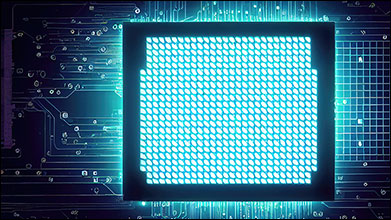Cloud native EDA tools & pre-optimized hardware platforms
Traditionally, chip designers for fiber-optic systems using electronic design automation (EDA) tools frequently needed a way to model photonic components in the same design environment with the electronics. Examples include modeling lasers or modulators with their electrical driver circuits, or modeling transimpedance amplifier (TIA) and receiver electronics with the photodetector. These designs focused primarily on optimizing electronics. Since the electronic component count is usually several orders higher than the photonic component count, it was typically sufficient to model a few photonic components through electrically equivalent circuit representations using SPICE or Verilog-A. It is no surprise that when photonic integrated circuits (PICs) picked up momentum, early electro-optical co-design approaches continued. However, the question needs to be asked: Is this the right approach to model photonics in PICs?
Optical Signals vs. Electrical Signals
As shown in Figure 1, there are fundamental differences between electrical and optical signals. Electrical signals describe current and voltage in the RF domain and are real-valued, baseband signals. A baseband signal has non-zero spectral contents near DC and is lowpass.
Optical signals, on the other hand, are analytic, narrowband signals with a complex-valued envelope; i.e., a complex number with real and imaginary parts describing amplitude and phase modulation of the optical carrier. Representing all the attributes of a photonic signal in an electrical signal requires resorting to unnatural, inefficient, and potentially inaccurate models.

Figure 1: Optical signals, photonic models, and photonic analyses are fundamentally from electrical circuit simulations
Photonic Components in PICs
Unlike electrical components, the behavior of photonic components in PICs is usually polarization and wavelength dependent. The performance estimates have strong correlations to the presence of optical reflections and resonances in the circuit, optical crosstalk (inter- and intra-channel crosstalk, polarization crosstalk), optical phase and intensity noise, dispersion (chromatic and polarization), and nonlinear physics of the photonic devices.
Can electrical representations of photonics accurately capture these phenomena? What is the best way to address electro-optical co-design in PICs?
Learn More About Seamless Electro-Optical Co-Design
Read our technical paper to learn more about seamless electro-optical co-design in modern PICs, including:
- The basics of electro-optics co-design, including the three core requirements of photonic circuit simulations and analyses: signals, models, and measurements
- How the three requirements differ from their electrical counterparts
- The repercussions of representing optical signals as electrical signals, since this affects not only the SDL design flow for PICs, but also the ability to capture the correct physics of the circuit
- The benefits of maintaining photonic models and process design kits (PDKs) as photonic designs versus electronic designs
Download our technical paper: Are Electrical Circuit Languages Robust Enough for Photonics? Why It is Time to Rethink Electro-Optics Co-Design










